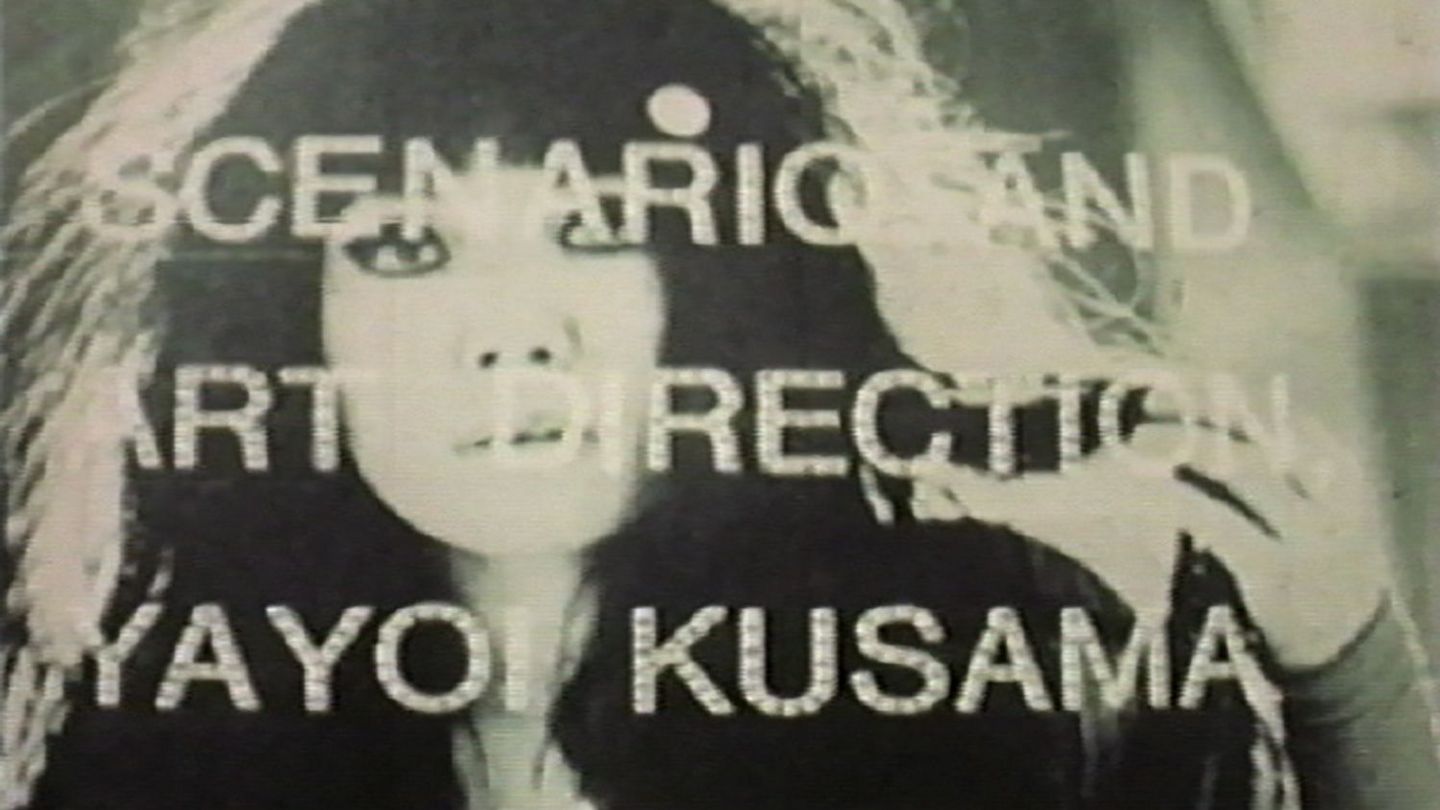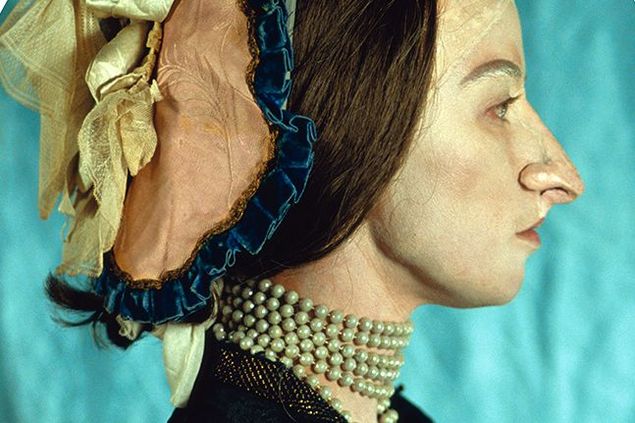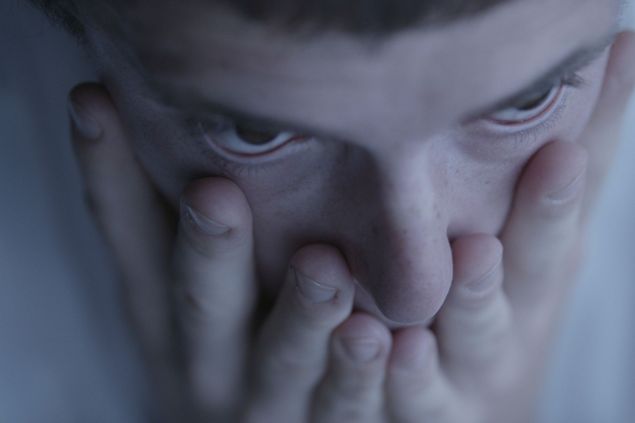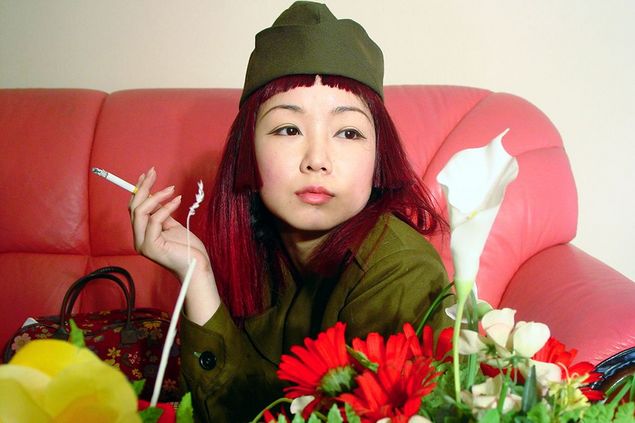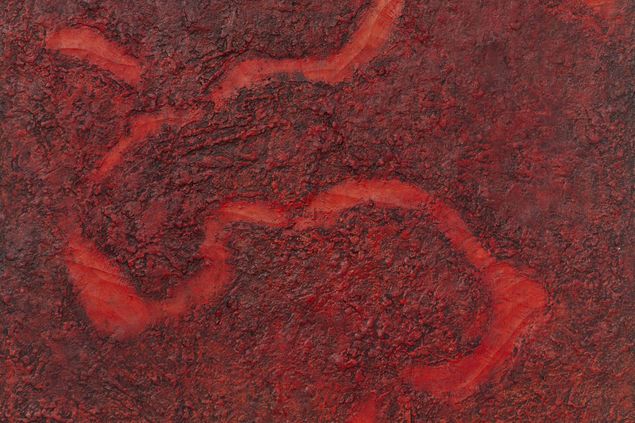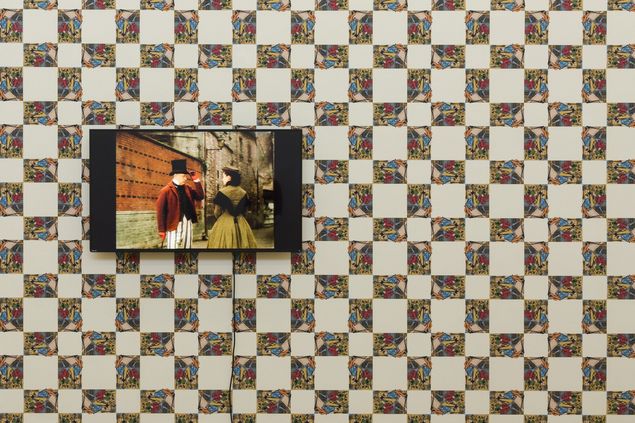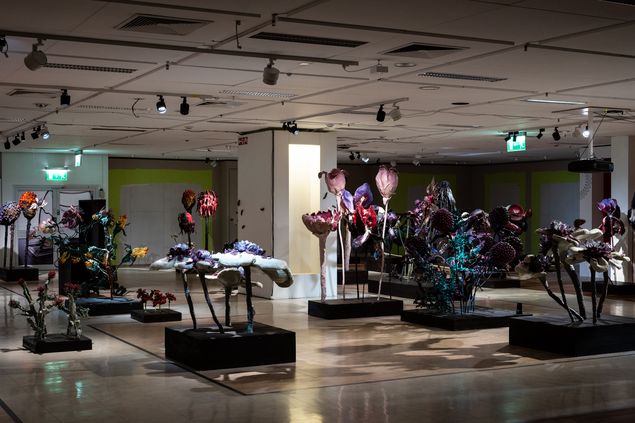Dressed in a traditional kimono in bright pink and holding an umbrella decorated with flowers, Yayoi Kusama wanders around the streets of New York. Against the gray sea of houses, she seems as exotic as a colorful butterfly. The installation Walking Piece (1966) documents her walk with 25 colored slides.
Since earliest childhood, Kusama has suffered from mental illness. This manifests itself in hallucinations in which she experiences her entire environment as covered by dots. Kusama processes these experiences through her artwork.
In her body-painting actions in the late 1960s, Kusama painted naked people with dots. Similar to her hallucinations, this was intended to dissolve the boundaries between art, people and the environment. The artist's most famous happenings can be seen in the video film Kusama's Self-Obliteration (1967).
